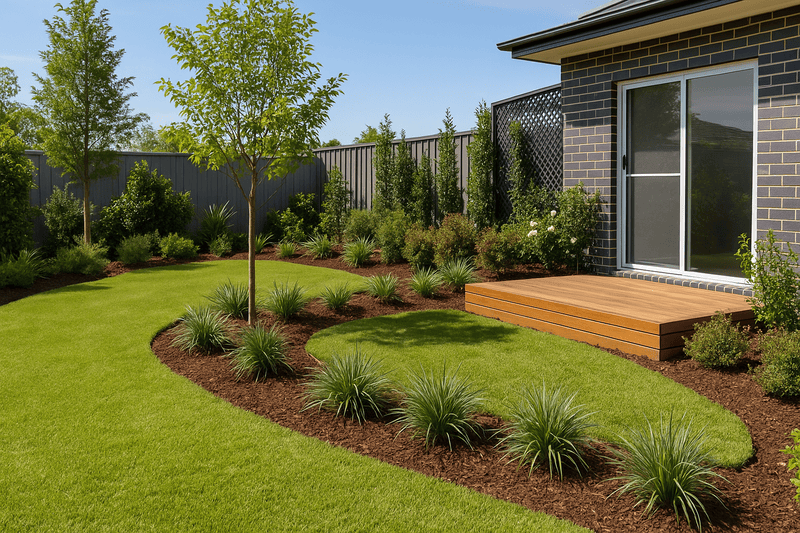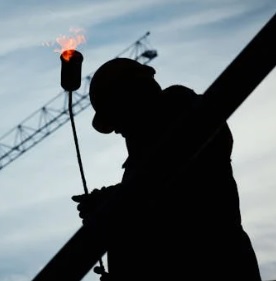
When it comes to creating the perfect outdoor space, landscaping is often treated as an afterthought—something to be tackled once the house is built or renovated. But if you’re living in or building around Leppington, landscaping isn’t just about kerb appeal. It’s about shaping a practical, sustainable, and enjoyable space that works with your environment, not against it.
So, how do you plan and execute a landscape project in one of Sydney’s fastest-growing suburbs? What should you consider beyond the basics of grass and garden beds? And how do you avoid the mistakes that leave many homeowners disappointed (and out of pocket)?
This guide explores everything you need to know about landscaping Leppington—from soil types and drainage to design trends and council rules—along with guidance from those who do it best.
Why Landscaping in Leppington Needs a Localised Approach
Located in Sydney’s south-west, Leppington has a unique mix of newly developed estates and semi-rural blocks. While the area is booming with construction, its varied terrain and soil conditions mean there’s no one-size-fits-all approach to landscaping.
Here’s what makes Leppington different:
- Clay-heavy soils in some areas that require amending for drainage and planting
- Rapid development means existing trees, wind patterns, and shade structures are often temporary or in flux
- Western Sydney heat makes water-efficient planting and shaded zones more than just optional—they’re essential
- Council requirements may impact the placement of retaining walls, drainage systems, or fencing
These challenges are exactly why working with a team that understands the local landscape—like landscaping Leppington by Waynes Landscaping—can save you stress, time, and money.
Common Landscaping Mistakes and How to Avoid Them
If you’ve ever seen a perfectly planted garden wilt within weeks, chances are one or more of these common missteps were involved:
- Poor drainage planning
Water pooling or runoff can quickly ruin lawns and garden beds. It’s essential to understand the slope of your block and install proper drains or channels. - Choosing plants that don’t suit the climate
Some plants thrive in Leppington’s hot summers, others won’t. Stick to species that handle heat, low water, and variable shade—especially during establishment. - Underestimating the need for structure
A few garden beds and a lawn won’t hold their shape long without proper edging, compacted base layers, or strategic paths to prevent wear. - Ignoring soil conditioning
Clay or sandy soil? Each requires different soil prep before planting or laying turf. Adding compost, gypsum, or soil mix can make or break plant survival. - No long-term maintenance plan
Will you be doing the upkeep, or hiring someone? Your answer should influence how many garden beds, hedges, or paved zones you include.
For more insights into avoiding rookie landscaping errors, this Blogrip post provides a handy checklist for those starting from scratch.
What to Consider Before You Start Digging
Design with purpose
Think about how you’ll use the space—do you need a shaded entertaining area, space for pets, a veggie garden, or low-maintenance pathways? Start from lifestyle, then design around it.
Consider the seasons
Your outdoor area will look and feel different in summer vs winter. Plan for airflow, sunlight, and shade across seasons.
Start with the essentials
If budget is tight, prioritise key zones: front yard presentation, driveway access, and outdoor entertaining. You can expand later as funds and needs change.
Don’t skimp on hardscaping
Retaining walls, pavers, decks, and fencing are investments. They give your landscape structure and shape that softscaping alone can’t.
Get a site-specific quote
No two blocks are the same. Elevation, soil type, sun exposure, and access all affect cost. Teams offering professional services for landscaping Leppington typically begin with a custom site assessment to guide design and costing.
Trends in Modern Landscaping Around Leppington
While function is key, homeowners are increasingly seeking design that balances practicality with personality. Here are some trends we’re seeing across Leppington properties:
- Native and low-water plantings
Species like Lomandra, Westringia, and Grevillea are heat-tolerant, low-maintenance, and great for attracting pollinators. - Multi-purpose zones
Think timber bench seating with built-in planters, or a fire pit area that doubles as a daytime entertaining space. - Stone and gravel elements
Crushed granite, river stones, and decomposed granite paths are popular for texture and drainage. - Outdoor lighting
Solar-powered and low-voltage LED lighting help extend outdoor use into the evening without spiking power bills. - Mixed surfaces
Combining pavers, turf, garden beds, and pebbles creates visual interest and breaks up large spaces.
Explore more ideas in this Blogrip feature on zoning outdoor areas for both visual impact and functional use.
Why DIY Isn’t Always Cheaper (or Smarter)
While Bunnings runs and YouTube tutorials can be tempting, DIY landscaping can backfire if you lack the time, tools, or experience. Cost blowouts, drainage issues, or uneven paver finishes can quickly offset any initial savings.
Working with experienced locals like expert help with landscaping Leppington ensures:
- Accurate soil grading and preparation
- Council-compliant drainage and retaining wall installations
- Professional machinery access for excavation or turf laying
- Faster project timelines
- Advice on plant spacing, mulch types, and layout planning
Most importantly, you’ll end up with a space that not only looks good on day one—but still functions and thrives years later.
The Right Team Makes All the Difference
With dozens of tradies and businesses advertising landscaping services, it’s easy to feel overwhelmed. Here’s what to look for when comparing quotes or teams:
- Experience with Leppington soil and subdivision regulations
- Clear project timelines and itemised estimates
- Strong portfolio of past work with similar property types
- Ability to handle both soft and hardscaping
- Good communication and aftercare advice
Teams like landscaping Leppington by Waynes Landscaping offer these advantages by combining local knowledge with practical experience, ensuring your project runs smoothly from start to finish.
Final Thoughts: Smart Landscaping Starts with Smart Planning
If you’re living in or moving to Leppington, don’t leave your outdoor areas to chance. A well-planned landscape enhances property value, increases liveability, and provides a daily source of pride.
Start by defining how you want to use your space, then work with professionals who know the local conditions. And remember, you don’t have to do it all at once—just start with a strong, sustainable foundation.
To explore your options or get expert guidance, visit landscaping Leppington by Waynes Landscaping and see how your outdoor vision can become reality.

Leave a Reply